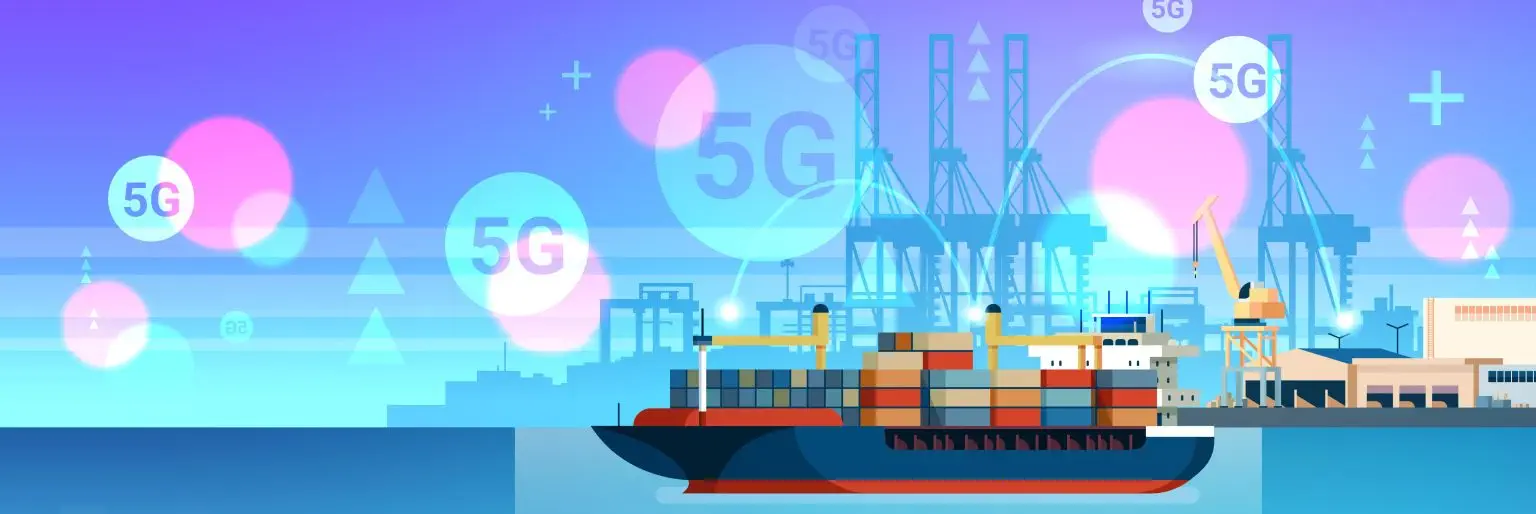
23 Dec Impact and benefits of 5G technology in the logistics industry
While some say the growth of 5G technology has taken a backseat due to the COVID-19 pandemic, industry experts believe 5G has a larger role to play. And visibly, the impact is already realized. The 5G in the logistics market is said to have a valuation of US$1 trillion by 2028. Ultra-reliable networks, faster processing, and improved operational efficiency are some of the key takeaways for the maritime industry. Therefore, the scope of growth with 5G for the logistics industry is much larger than predicted. While the impact and benefits the industry can leverage out of 5G are enormous, let us explore some of them.
Lower cost and no risk of cyber threats
For a long time, the logistics industry has been concerned about one aspect of the trade, i.e., cost saving. While many tend to cut costs by laying off their workforce, there is always a capacity to cut high costs when it comes to operations. By automating some of the mundane processes and eliminating paperwork, stakeholders can save enormous costs. However, several stakeholders believe that going digital will increase their risk of being prone to a cyber security attack. This is where 5G comes as a boon to these stakeholders as it offers protection from cyber threats.
Improved efficiency
With delays at every checkpoint, moving one container within a port ecosystem consumes a lot of time. Hence, the experts in the industry believe 5G can be a game-changing initiative to improve operational efficiency and achieve positive business synergies. Attaching a low-cost asset tracker to shipments, pallets, or individual assets can provide precise location and temperature data. Connecting asset trackers over a cellular network provides superior security over proprietary and other IoT standards.
Faster turnaround
5G comes with a new level of connectivity that improves faster speed and lower latency in the logistics ecosystem overall. It can trigger the advancement of data and information systems, thereby building an efficient and robust operational flow. Especially, shipping lines focusing on shorter vessel turnaround time will have a lot to leverage from 5G.
Real time data analytics
Shipping lines, consolidators and all others involved in the trade always look for milestone updates on freight movement. 5G moves the process to the next level by analysing motion and environmental data from large port parts. This will yield predictive data in a much more comprehensive manner to anticipate demand shortages, etc. Therefore, stakeholders can quickly set a strategy to avoid discrepancies.
Achieving sustainability goals
The most crucial aspect for success in the future will be achieving environmental sustainability goals. And 5G is the key to achieving all this. Already, regulators are beginning to question the stakeholders on their sustainability initiatives. Some have also come up with a larger mandate to achieve these goals, such as paperless trade, single window clearance, and reducing carbon emissions. 5G offers a robust framework to acquire all these goals seamlessly. Hence, the stakeholders implementing a port community system/single window system need to ensure that all these are enriched with a 5G system to leverage all the benefits.
The future is 5G
Major industries are already utilizing 5G to a large extent for faster processing. The scope of 5G’s penetration in logistics and supply chain is higher as companies move to a data-driven form of business functioning. However, the challenge will be to find an IT solutions provider who offers a port community system/single window system enriched with 5G specifications. With those enrichments, the industry has a lot to gain.
